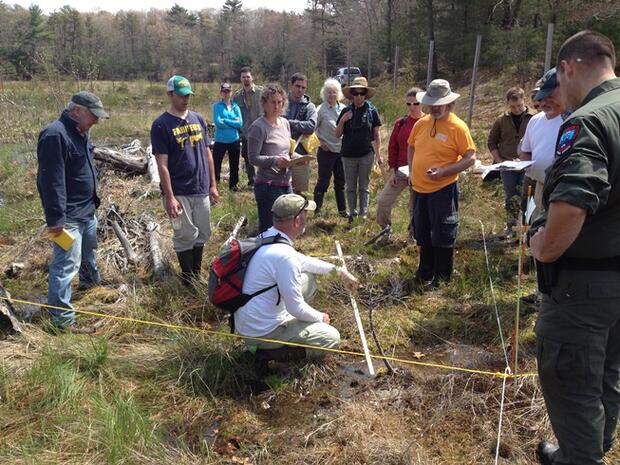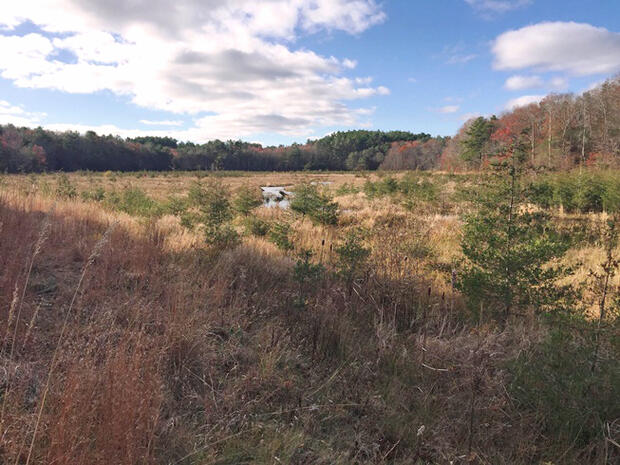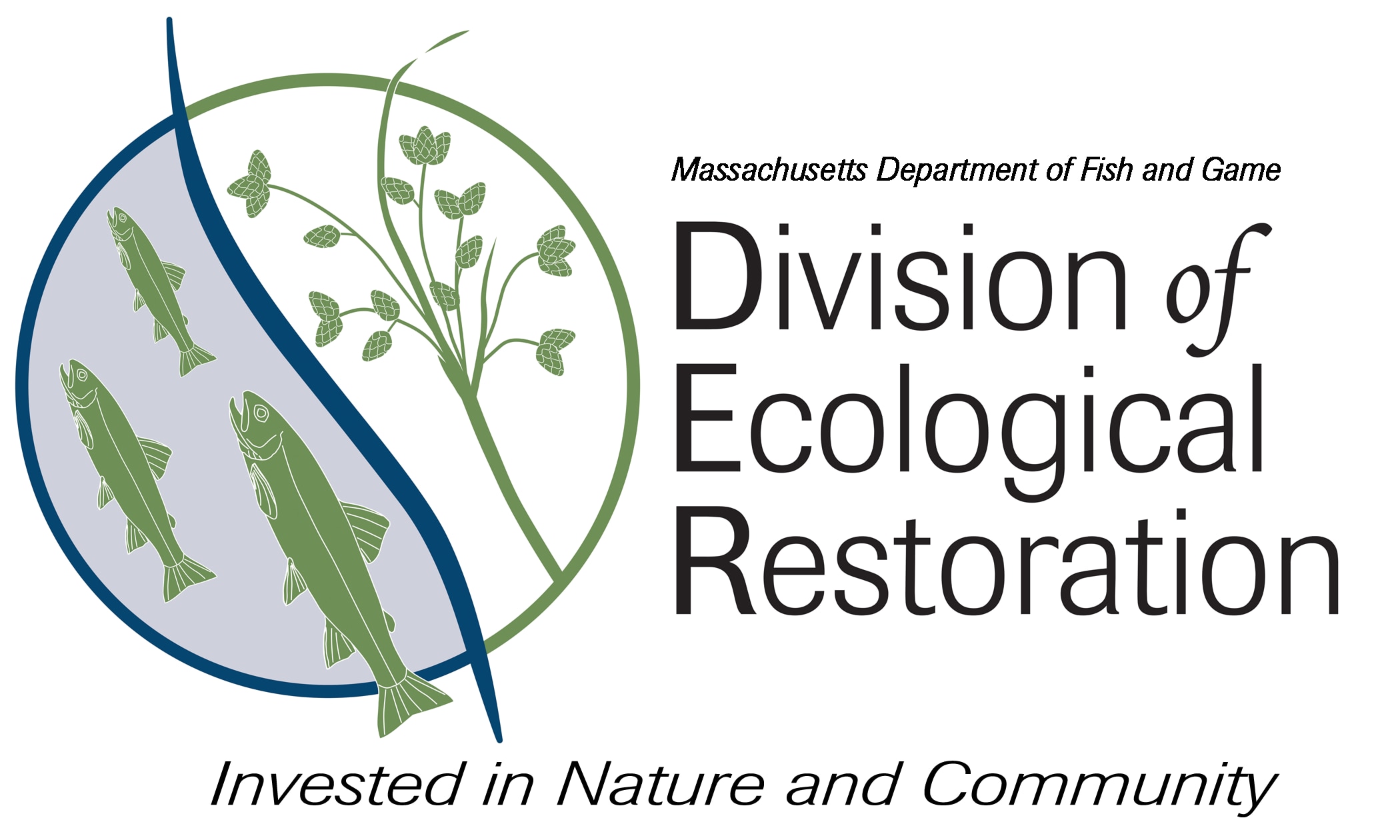- Division of Ecological Restoration
Around 2005, The Town of Plymouth had a vision: restore a globally rare Atlantic white cedar (AWC) swamp within a retired cranberry farm. Soil chemistry, groundwater levels, and the site history suggested it was possible. Years later, and with the assistance of DER and many others (U.S. Fish and Wildlife Service, The Nature Conservancy, USDA Natural Resource Conservation Service, and more), the vision was put into action. Approximately 20,000 young (2-3 year old) trees were planted as part of the Eel River Headwaters Restoration Project. The effort was the first of its kind in Massachusetts, and earned the Town of Plymouth and partners the Coastal America Partnership Award from the U.S. Department of Interior in 2011.
To determine the effectiveness of this ambitious AWC tree planting effort, DER and the Town organized a volunteer-based monitoring program. At three separate monitoring events (years 1, 2, and 5 following planting) dozens of volunteers collected data on tree size and condition. About 600 individual trees were measured at each sampling wave. Information was collected on overall vegetation coverage and moisture levels within 157 sampling plots for each year. The results were compiled, analyzed (thank you Dr. Keri-Nicole Dillman), and presented at the Atlantic white cedar symposium in Plymouth in March 2016.
So what did we learn? First, we wanted to understand overall tree survival and growth. At year 5, approximately 65% of trees within the sampling plots had survived. That’s pretty good! We found substantial differences in survival within different areas of the project site. The southern and northern sections fared better than the central region. This could be related to soil moisture – and will be further assessed. In terms of growth, by year 5, the average tree height was 5 feet and the tallest tree observed was 12 feet. Most trees (73%) were bearing cones by year 2, and evidence of re-generation (seedlings!) was clearly observed in year 5.
The volunteer collected data also helped us answer broader questions including about the pace of site re-vegetation. During construction the site was turned to bare mud but one year after construction, 42% of plots had full ground coverage. By year 5, that increased to 92%. Activation of the native seed bank and natural plant regeneration thus seems successful, an important finding for future cranberry farm to wetland restoration projects. The punchline: So far so good. The site is on a positive trajectory toward a healthy AWC swamp, perhaps 100 years from now. In terms of regional wetland restoration practice, these findings are helping to shape our planting approach at other wetland restoration sites in the region.
The site is now public conservation land with a beautiful trail system maintained by the Town of Plymouth. All are invited to see this site (park here). Enjoy!


